Right around this time of year, fox kits are being born in dens all over New England. Back in 2014, I accidentally stumbled on a fox den while snowshoeing through the woods behind my home, and was lucky enough to watch (from a distance) over several years as a fox family raised litters of kits.
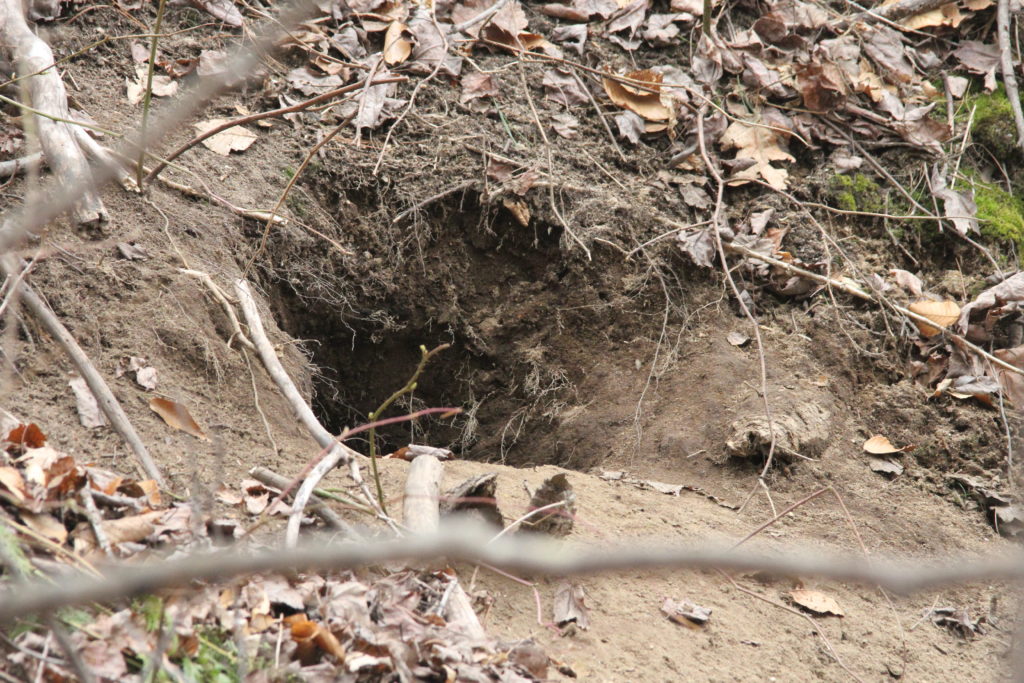
In my experience, foxes choose a den that’s protected and where the winter snow around the opening melts early.
Kits are born blind and helpless, so the female fox, or vixen, will stay inside with her kits for about two weeks to keep them warm and safe. The male fox, or dog, will bring food to her. Listen as he arrives with something at the opening and “talks to her”.
The fox kits come out of the den when they’re about a month old. The picture below is the youngest fox kit I’ve ever photographed. I’m thinking it might even have been its very first time out of the den.
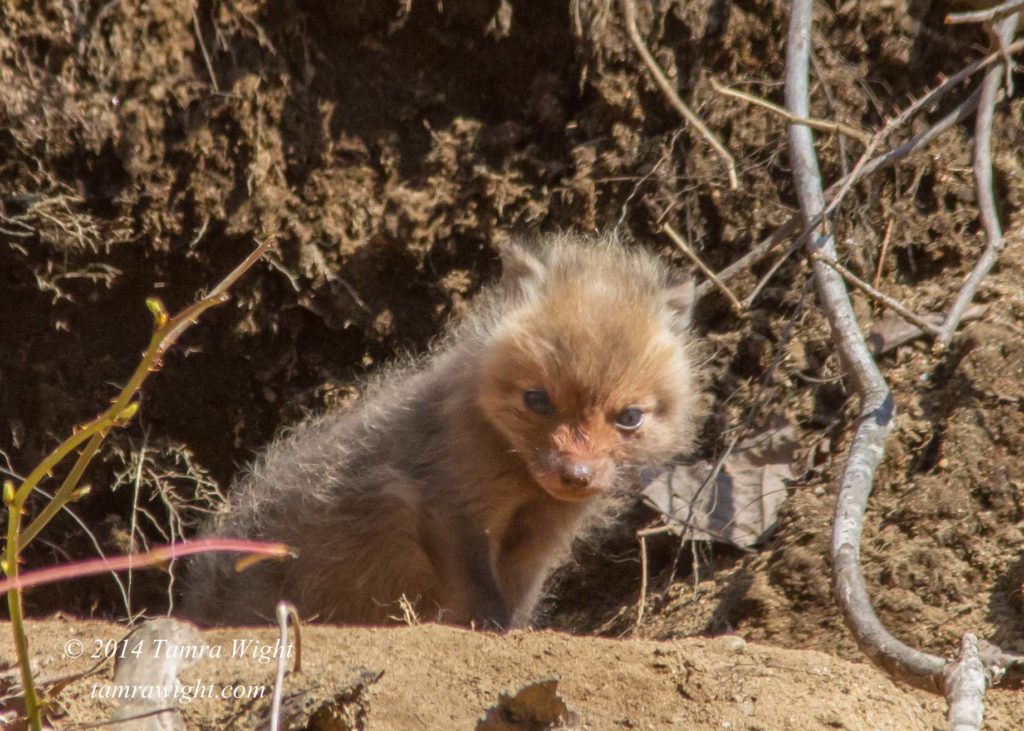
Adult fox have several dens marked for use each season. If they feel their kits are in danger, they’ll move them overnight to another den. Predators to young kits include coyotes, eagles and humans.
Foxes hear and see very, very well. I worried every time I visited, that they’d think I meant to harm the kits and move the family. I didn’t want this to happen! Not only does it stress out the foxes, but I’d miss them terribly. So I made sure to watch the family from far away, hiding behind bushes, staying quiet, and not bringing people with me. Remember, my camera lens works like a telescope. I only visited once every two weeks, but when I did, they seemed to be watching me! If I was going to write about their behavior, I needed to know how they acted when a human wasn’t in the area.
So I set up a trail camera to video tape them.
Notice how the kits act a little like cats and dogs, the way they pounce and stalk each other. They’re playing, but even at about a month old, they’re also practicing their hunting skills.
Did you also notice how their fur hasn’t turned red yet? That’s because they need to blend in with their April and early May surroundings, which is last year’s leaf litter. You can tell they’re red fox kits by the white tip of their tail.
As the kits get older, their reddish coloring will easily tell us they’re Red Foxes.
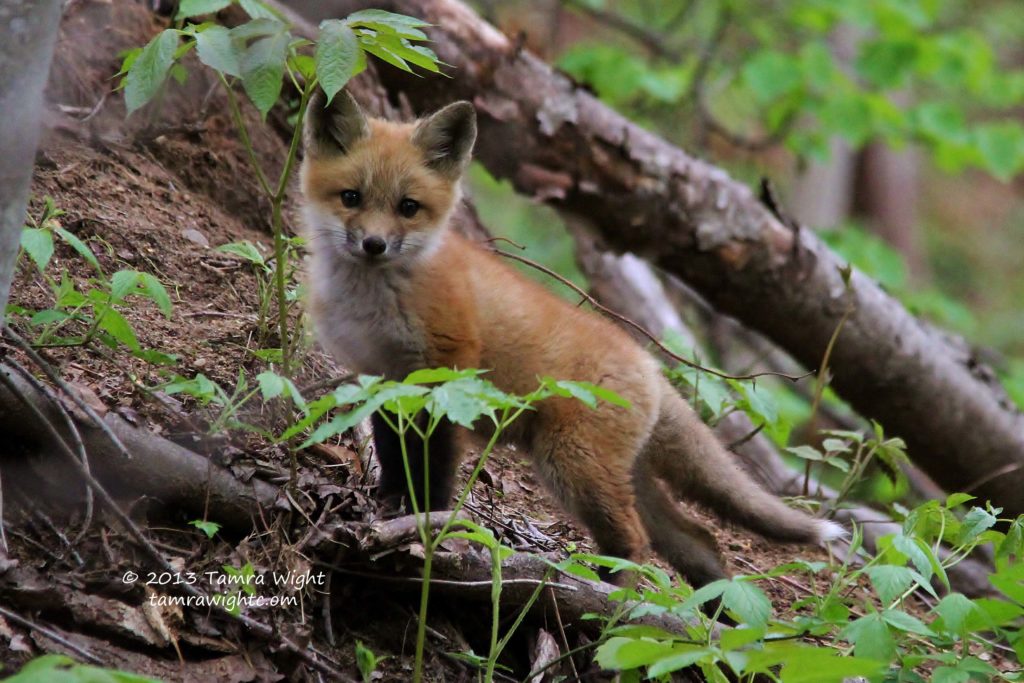
Foxes hunt for rodents, rabbits, birds and other small animals. But they will also eat fish, vegetables, fruit, frogs and even . . . . worms!
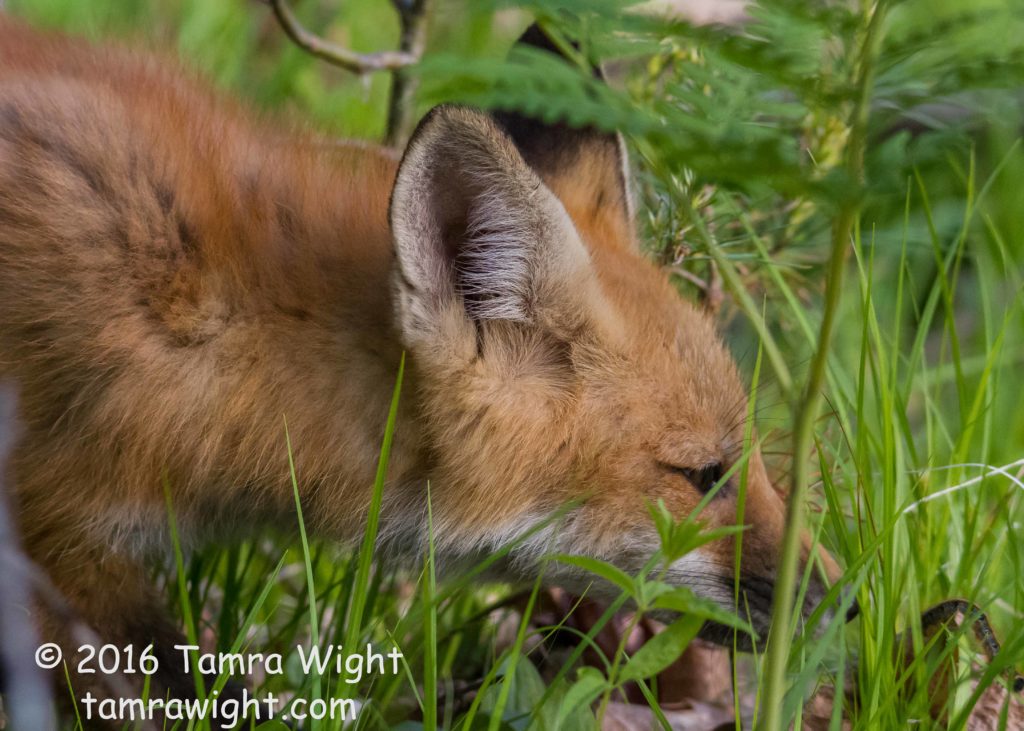
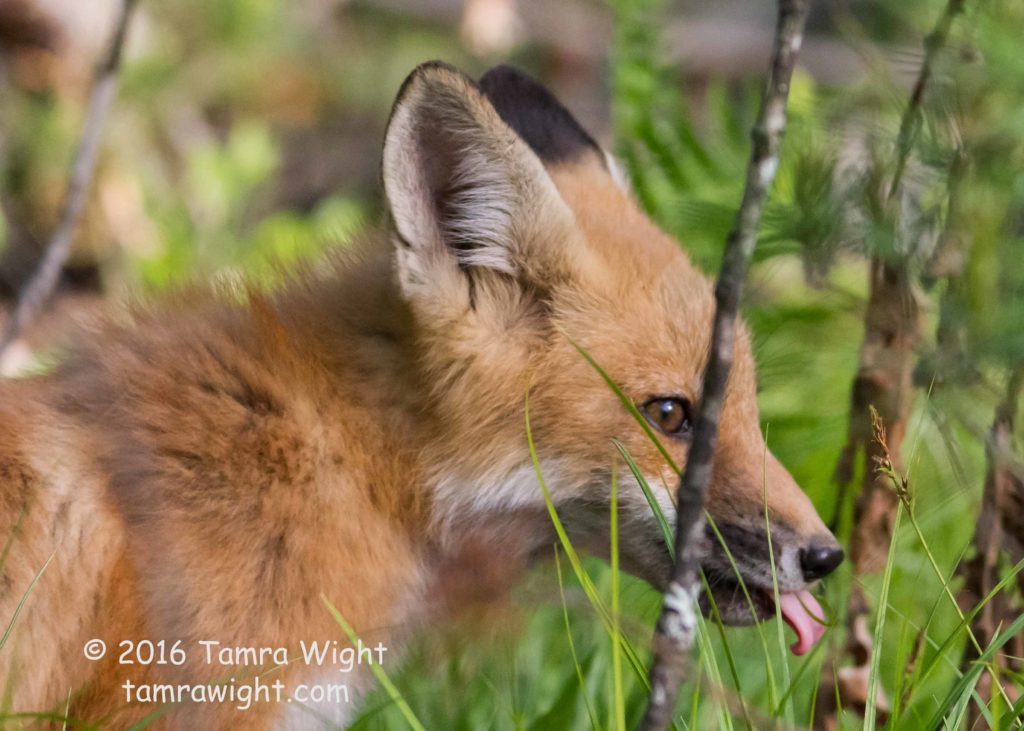
I learned so much while I was studying this fox family! Much of what I learned ended up in the pages of of Mystery of the Missing Fox. Next time I talk about foxes, I’ll tell you the story of when I found my very first fox kit and how that inspired a whole scene in the book.
Have you ever seen a fox? Tell me about it in the comments below. I love fox stories!
